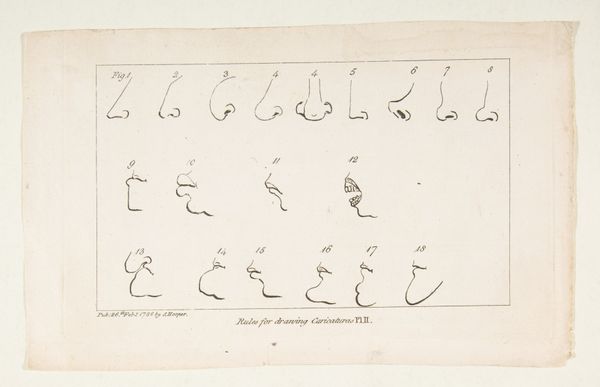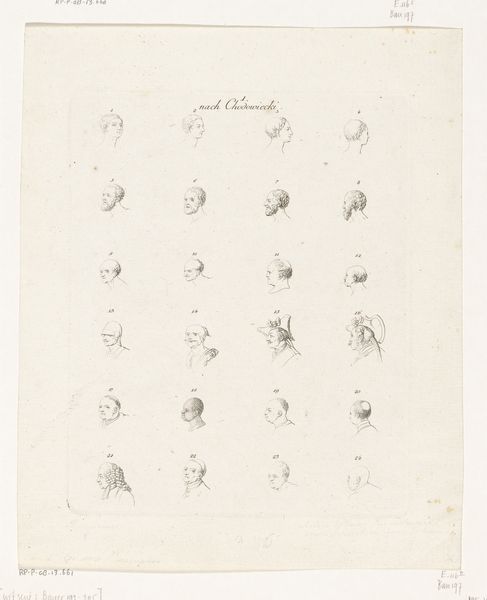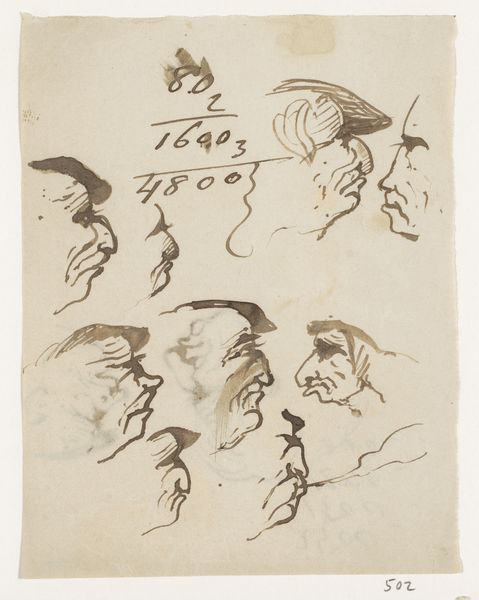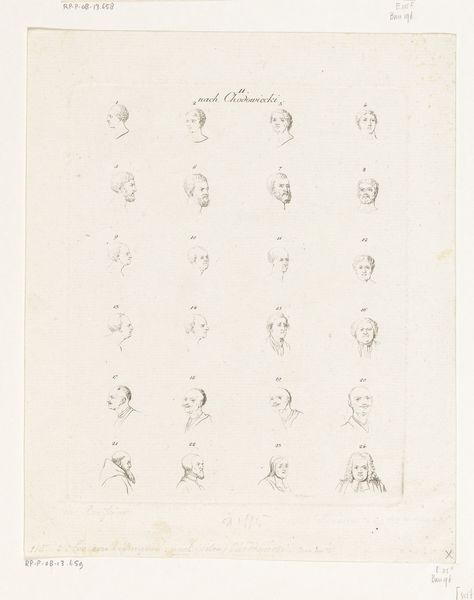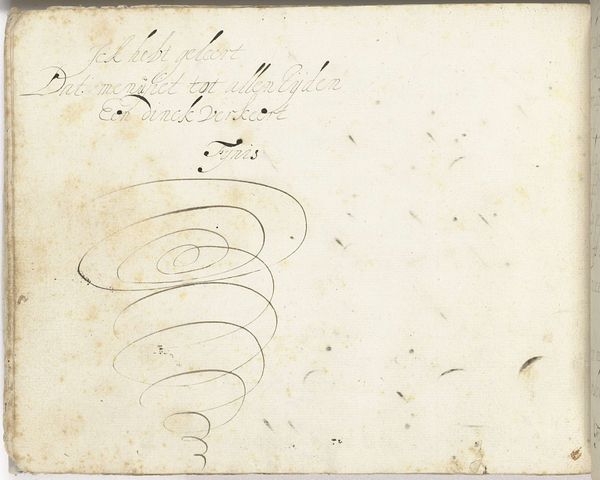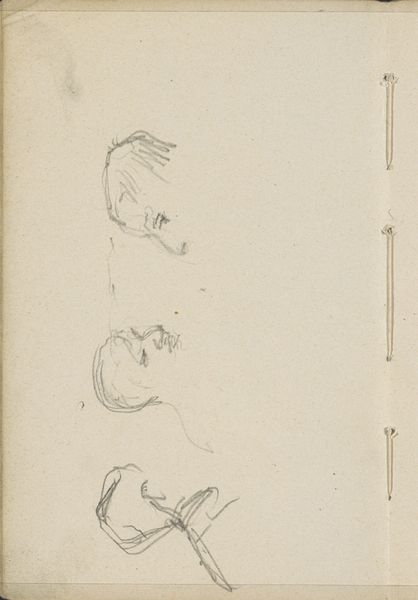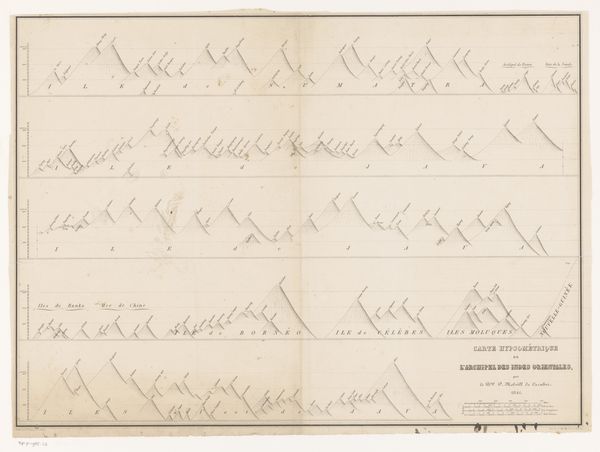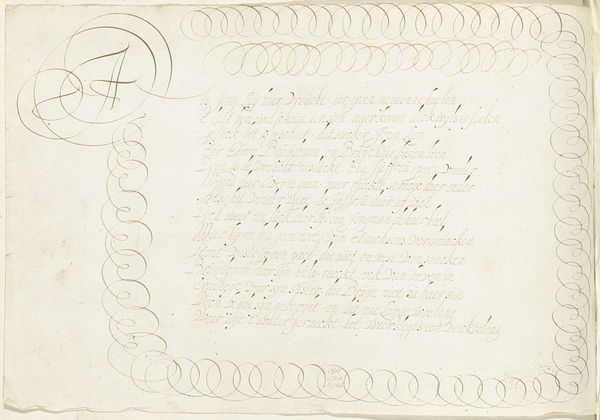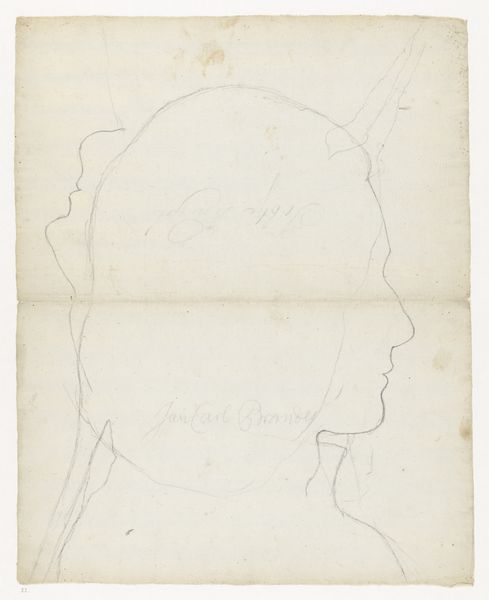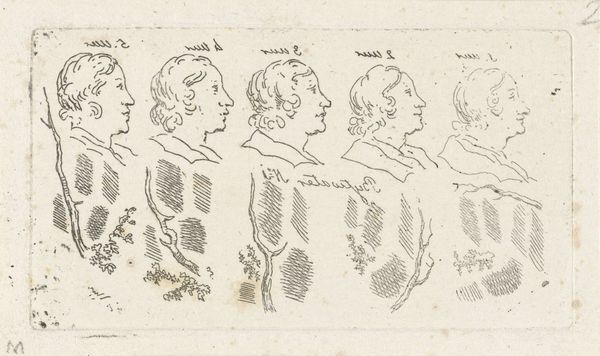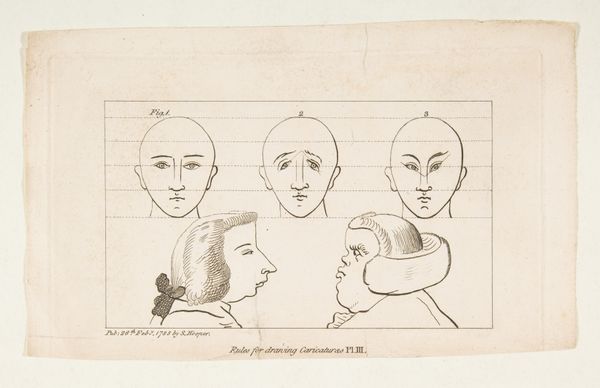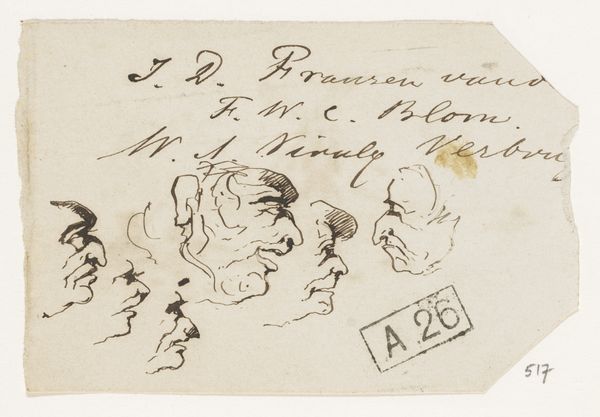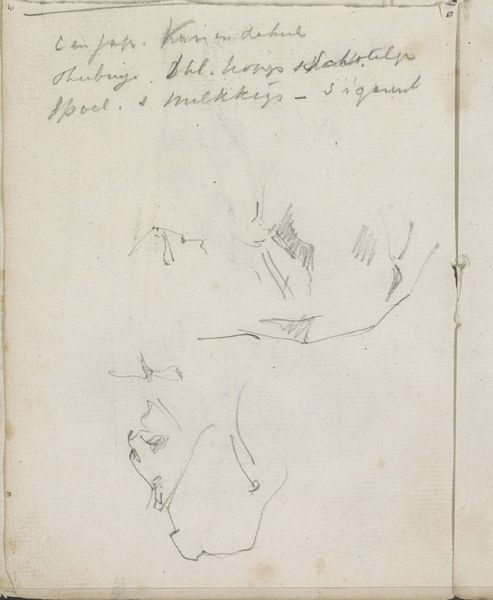
drawing, print, paper, engraving
#
portrait
#
drawing
#
face
# print
#
caricature
#
paper
#
line
#
history-painting
#
academic-art
#
engraving
#
profile
Dimensions: Sheet: 5 1/4 x 8 9/16 in. (13.4 x 21.8 cm) Plate: 7 11/16 in. (19.5 cm)
Copyright: Public Domain
Curator: This grid of faces presents a study in the art of caricature. Formally titled "Plate I, from Rules for Drawing Caricaturas," this print was crafted by Francis Grose in 1788, rendered with delicate lines on paper. Editor: At first glance, it's the underlying geometry that catches my eye – these parallel lines boxing in exaggerated profiles. It has a strange order and rationality to it, a methodical deconstruction of the human face. Curator: Indeed, this structured layout exposes caricature not merely as spontaneous jest but as a reasoned process, one governed by rules that exploit and exaggerate deviations from classical beauty. The faces remind us of ancient physiognomy and the 18th century's pseudo-scientific pursuit of understanding character through physical features. Editor: That's fascinating. It feels almost like an attempt to codify humor itself! I imagine that these rules offered a new mode of critique during the Age of Enlightenment, shaping perceptions, mocking those in power, or popular stereotypes. Curator: Precisely! The image partakes in a larger history of printed satire, with traditions of pointed commentary shaping how society views not just public figures but social types. There is the history-painting element that's tied to moral storytelling through facial characteristics. Think of Roman busts used to both remember and prescribe proper, public, masculine behaviors. Editor: It seems such deliberate visual choices like those lines imply, as well as construct specific social, cultural, and class norms. But how were these caricatures received at the time? Were they perceived as humorous? Did the political and class elites adopt and subvert such images to manipulate and maintain power structures? Curator: Caricatures could have served as very powerful instruments for social change or control; Grose and his contemporaries navigated that complex terrain by subtly revealing established truths in novel and amusing forms that appealed to various levels of viewers. Editor: It gives a potent and complex twist on artistic representation – making you ponder what shapes perception and if the faces gazing across eras could perceive the way they are received in the current one.
Comments
No comments
Be the first to comment and join the conversation on the ultimate creative platform.
